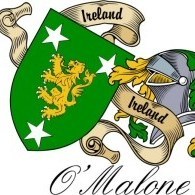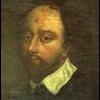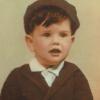All Activity
- Today
-
Traction engines operated by Coupe Bros of Carlisle Street East, laying electricity cable supplied by W.T. Glover Ltd of Trafford Park. It would be nice to learn where abouts in Sheffield they were working?
-

Moulson Brothers, Merchants and Manufacturers of Saws and Edge Tools etc., Union Works, Division Street
tozzin replied to Ponytail's topic in Made In Sheffield
Moulson Brothers Saw & Edge Tool manufacturers Union Works Green Lane The faded name of Moulson Brothers Saw & Edge Tool manufacturers on what was the Union Works entrance on Green Lane, its now part of a flats complex on another world famous manufacturers of Files & Saws Alfred Becket’s Brooklyn Works, when I spotted this gateway, I could see some faded writing but I could work out the manufacturers name, I could see it was Union Works and on further research I found it was part of the Moulson Brothers little tools empire. Moulson had been launched by the 1820s as a maker of saws and joiners' tools and by the 1830s was based in Union Works, Division St. Thomas and John Moulson appears to have been the brothers involved, though by 1850 other members of the family were active. Although they specialised in tools, the Moulson’s also traded in cutlery. Moulson Bros had an office in Pearl St, New York, by 1850. Moulson Bros best known partner was Thomas Moulson, who became Master Cutler in 1854. He was censured by the Company of Cutlers in his year of office for expressing the view after the Paris Exhibition that the Sheffield trade was backward and declining. Several Moulson partners died in the early 1860s. These included Thomas Moulson of Machon Bank, on 4 December 1862, aged 70. He was buried in Ecclesall. Joseph Moulson died 7 December 1866, aged 43. John Moulson of Stone Grove, died on 6 January 1864 aged 69, and was also buried in Ecclesall. The firm continued to trade on Division St under new Moulson managers, such as William Henry Moulson. A further company, John Moulson, was listed in 1868 as a merchant and manufacturer of table and spring knives, and edge tools, at Globe Works, Penistone Rd. It seems likely that the owner was a descendent of one of the Moulson Bros. John Moulson-like other cutlers at the Globe Works, Ibbotson Bros, Walter & Unwin & Rodgers had cultivated the American trade. He was described as an American Agent with a New York Office. Henry Elliott was John's agent in Sheffield and he also worked for Moulson Brothers. By 1875 that company was bankrupt, with debts of over £6.000 a situation that was not helped when in the following year Elliott embezzled £2.000 and absconded to America, he did return to face the music. In the 1880s, both John Moulson and Moulson Bros were listed at the same address in Division St and Green Lane. William Henry Moulson withdrew from Moulson Bros & Co in 1880, leaving the business to his partner Thomas Griffiths. However Moulson Bros had ceased trading by the end of that decade. William Henry Moulson, of Broomgrove Road, died 7 Feb 1890 aged 64 and was buried on the 1st of March in the Ecclesall church of All Saints. John Moulson appears to have retired in about 1885. The New York Times 8 Feb 1901, recorded his death on the previous day at Grosvenor Hotel and commented that he: “was well known in the cutlery trade in this city. He came from Sheffield, England, in 1849, as a salesman and became later the American agent for an English cutlery house. He retired from business about fifteen years ago, and had lived since that time at the Brevoort House and layer at the Grosvenor“. As tool collectors all over the world, Sheffield Tools are highly prized as these tools still perform their tasks like they did on their day of manufacture, In the case of Robert Sorby and Sons the factory was known as Kangaroo Works. The kangaroo itself was one of a number of registered trade marks used extensively until the 1980's. The presence of Robert Sorby in the Antipodes is further reflected by medals and diplomas of distinction awarded in both New Zealand and Australia as well as in London, Edinburgh and Calcutta. Robert Sorby left the Kangaroo Works in 1934, the building was demolished in 2008 with only the archway surviving. This has been lovingly restored and opened to the public in March 2010 as part of the Hawley Collection at Kelham Island Museum, Sheffield. Robert Sorby products are sold all over the world to hobbyist and professional woodworkers alike who seek tools of the highest quality. The product range is by no means as wide as in previous years but is far deeper with particular specialisation in three woodworking areas - wood turning, wood carving and cabinet making. The invention of crucible steel by Benjamin Huntsman in Sheffield in 1742 was a real boon to the edge tool manufacturers for this uniform, higher grade of steel - far superior to anything else available in the world at the time - gave them a march on their competitors worldwide. In 1833 there were 59 edge tool and 74 saw makers registered in Sheffield. By 1860 these figures had increased to 78 and 100 respectively only to decline by 1888 to 68 and 86. Of those edge tool makers registered back in 1833 only Robert Sorby survives to this day. Indeed, it may be that Robert Sorby is the oldest manufacturer of hand tools in Sheffield. Certainly it is one of the oldest surviving companies of all types in the city. Many of those businesses were little more than one- or two-man operations based on the cutlers' "Little Mesters" principle whereby many workers were self-employed and allowed to rent space in a workshop. My two Yorkshire Dumplings Mr Dawson & Mr Sorsby are quite chuffed at their sudden fame thanks to the Retro, they now hand out business cards emblazoned with a Cabbage! One further thing on the Union Works gateway, the name of Barton’s Stables can be just seen, this man had stables in the Castle House on Ladysbridge and was a Vet at the Dogs Home that was opened there. -
Number 69 was demolished under Clearance Order 74A, 1934. These houses appear on the 1851 Ordnance Survey map. There was an archway (through to the coal dealer's yard?) between nos. 65 and 69 that had a store above it. The Hogan family appear to be the final residents of no. 69 during 1935, their son John at St. Vincents RC School passed his Secondary School Scholarship exam in July.
-
SteveHB started following Edward Street Sheffield
-
No number 69 Edward Street shown in the 1925 or 1957 directories?
- Yesterday
-
Aaron James Hartley started following Rockingham Street / Devonshire Street
-

Rockingham Street / Devonshire Street
Aaron James Hartley replied to Sheffield History's topic in Sheffield History Chat
Got my great grandfather at 164 rockingham street in 1851 William Bingham, Bingham and Ogden’s I think they were then, moved to parkwood springs shortly after. -

1940s MELTON MOWBRAY 11/12th MAY
Heartshome replied to Heartshome's topic in General Chat (Anything Goes)
ONE WEEK TO GO!!! The organisers are all sorted and ready, the town and park are going to be a buzz, with those taking part and visitors, who will have loads to see, music to listen to, stalls to browse, and displays to watch. An awful lot of work has gone in to this event for the town, I do really hope they get the support they deserve. ( I'm going there all day Saturday, and friends are doing the music, dancing & announcing, so fingers crossed it all goes well ) 🤞 Regards Heartshome -
togger started following Edward Street Sheffield
-
Hi, I am trying to locate the actual house that was 69 Edward Street in the mid 1900s can anyone help please? Many thanks
-

History of Attercliffe and the Benjamin Huntsman steelworks
Edmund replied to a topic in Sheffield History Chat
Here's a VR model of Huntsman's Attercliffe works, with details of how the model was made: Huntsman's Works Virtual Reality Model -
MartinR started following Victoria or Midland?
-
As History Dude says, the red tail lamp (and there are only ever red lamps on the rearmost vehicle) marks the end of the train. In the days of semaphore signalling if a train passed without a lamp, then the signalman sent 9 beats to the box in advance (to stop and check the train) and 4-5 to the box in the rear. If the signal man thought the train was actually divided, then he sent 5-5, and of course in the case of unbraked goods stock on an incline might need to sent 2-5-5 (train running away in the right direction) or 4-5-5 (train running away in the wrong direction).
- Last week
-

Can anyone work out what this says please.
Aaron James Hartley replied to boginspro's topic in Sheffield History Chat
Mary Ann is my 4th great grandmother, weren’t we looking at Sellars before? I have all those census’s, all transcripted aswell. Plus a picture of Joseph broadhead. Also some census’s are split and the sons William and Thomas are on a second page in the 1841 address, which throws any searches all over.Joseph’s daughter Sarah Ann would go on to marry David sellars’s (the huntsman) son Francis Simmons Sellars also a saw maker. 1841 Solly St. Residence:1841 Solley Street, Sheffield, Sheffield, Yorkshire, England Joseph Broadhead Age:13 Father (implied):Mathew Broadhead circa 1797 - occupation saw grinder Mother (implied):Ann Broadhead Siblings (implied):Sarah Broadhead Mary Broadhead Hanah Broadhead William Broadhead saw Grindr Thomas Broadhead saw Grindr John Broadhead Matilda Broadhead 1851 11 Claphams Yard Birth:Circa 1827 Sheffield, Yorkshire, England Residence:1851 11 Claphams Yd, Pea Croft, Sheffield, Yorkshire - West Riding, England Joseph Broadhead Age:24 Marital status:Married Occupation:Saw Grinder Wife:Mary Ann Broadhead Children:Sarah Broadhead Mary Ann Broadhead 1861 Hallam Head, Upper Hallam, Yorkshire, Joseph Broadhead Age: 33 Marital status: Married Occupation: Saw Grinder Inhabited: 1 Wife: Mary Ann Broadhead Children: Sarah A Broadhead Mary A Broadhead Joseph Broadhead Matthew Broadhead Thomas Broadhead Elizabeth Broadhead The next census I have after this is Garton Manchester 1871 with all the family. Then back to Sheffield by 1881 at Lydgate lane. -
Aaron James Hartley started following Can anyone work out what this says please.
-

Can anyone work out what this says please.
Aaron James Hartley replied to boginspro's topic in Sheffield History Chat
Mary Ann is my 4th great grandmother, wasn’t we looking at Sellars before? -
Ponytail started following Back-to-back houses
-
30, Mowbray Street 'back to back' house, a listed building as an example of workers' housing of the 1850s. 2006. t11433 Photographer: Mary Rhodes.
-
Sheffield was noted for having many two storey back to backs (not attics). Here's a photo of my mum in 1936 outside her house on Jericho street. Note the bedroom windows open to get as much ventilation as possible, also shutters on the ground floor, and donkey stoned steps. In her new Whitsun outfit.
-
Lysanderix started following Back-to-back houses
-
Many people still confuse “back to back’s “with all terraced housing. A terrace of “back to back's “meant that an individual dwelling only had a frontage of its own. The rear was shared with its back street neighbour’s back wall and the end walls, either side ,were also shared. They lacked adequate ventilation had poor sanitation ……which encouraged the transmission of infectious diseases, and bugs in general. Gone and not missed…although one wonders with the current housing crisis if some bright spark might push for their reIntroduction?
-
southside started following Back-to-back houses
-
National Trust: Birmingham. The last Back to Back houses in the Country.
-

Victoria or Midland?
History dude replied to History dude's topic in Sheffield Buses, Trams and Trains
That's very interesting, Eric. The lamps were to tell staff that it was the end of the train. Any train without an end lamp had to be reported to the signal man to stop it. As this meant that part of the train could have decoupled. Fitting and checking was thus an important job. There's another thread with more pictures of the station on this section. Be sure to check it out. Such a shame your dad is not around. I could have a million questions for him. The chances now of speaking to someone who actually worked on the station are getting less each year. Since it closed 54 years ago, the only people alive now would be under 30 when it was still open. And I can't see them having younger staff on the station from about 1966 to 1970. Which limits the number of people left to answer questions. One being what were the brick buildings used for? PS: I have just found in my collection a picture of the same photo much rougher looking, dating to 1969. This makes it even more interesting, as the sign for platform 1 has not been removed, even though the track to it had been lifted by 1969. -
Eric Boocock started following Victoria or Midland?
-

Victoria or Midland?
Eric Boocock replied to History dude's topic in Sheffield Buses, Trams and Trains
Without doubt it's Victoria Station looking out towards the station approach. My Dad was a porter-cum-lamp man there in the 1950's and 60's and I spent may hours of my childhood accompanying him to work where he regularly pushed me along the platforms on the back of a luggage trolley. He also allowed me to secure the lamps on the front and back of trains whilst they were parked at a platform, but I don't think @Elf n Safety' would be too happy with that. He also took on the station announcer's role advising travellers of incoming trains and the destination of outgoing trains. Once he'd done the announcing, and unknowingly to me, he used the microphone to contact Father Christmas's fairies to order a supply of goodies for me such as spangles, lucky bags, Fry's Five Boys chocolate bars and sherbet dips, but my wife thought I was stupid. (Only joking. I was only 6 or 7 at the time). Happy days! Eric Boocock -
-
One of the access subways photographed earlier this year. This would be the one on the right of the earlier picture. What was steps is now a ramp.
-

Sheffield Castle - Excavating the Castle ruins..
southside replied to Sheffield History's topic in Sheffield History Chat
Castle Hill: Britain from Above 1921. The construction of Exchange Place is under way. The Sheaf culverted over and on the location of the Alexander Theatre(demolished 1914) the yet to be built Alexander Hotel. Castle Folds Lane running down from Exchange Street to Chandlers Row, rear of the shambles. https://www.picturesheffield.com/frontend.php?action=printdetails&keywords=Ref_No_increment;EQUALS;y10037&prevUrl= -

Victoria or Midland?
Lysanderix replied to History dude's topic in Sheffield Buses, Trams and Trains
According to Wikipedia ,the station received a new front in 1908 and further improvements in the period 1939/40. -
Possibly design for the proposed Tontine Inn, c.1780-1785. https://www.picturesheffield.com/frontend.php?keywords=Ref_No_increment;EQUALS;arc04491&pos=200&action=zoom&id=155647 Marked 'level with swine market, bottom of King Street, King Street raised'. Possibly Stables, etc for the proposed Tontine Inn, c.1780 -1785. https://www.picturesheffield.com/frontend.php?keywords=Ref_No_increment;EQUALS;arc04489&pos=198&action=zoom&id=155645 Marked shoeing house, pig stys, court for pigs, grains [store], [? Ostry]. Possibly Stables, etc for the proposed Tontine Inn, c.1780 -1785. https://www.picturesheffield.com/frontend.php?keywords=Ref_No_increment;EQUALS;arc04490&pos=199&action=zoom&id=155646 Marked [? Ostry], Mrs Smilter’s premises, Swindon and Beardsall’s premises, pig stys, grains [store], smith’s shop,





























